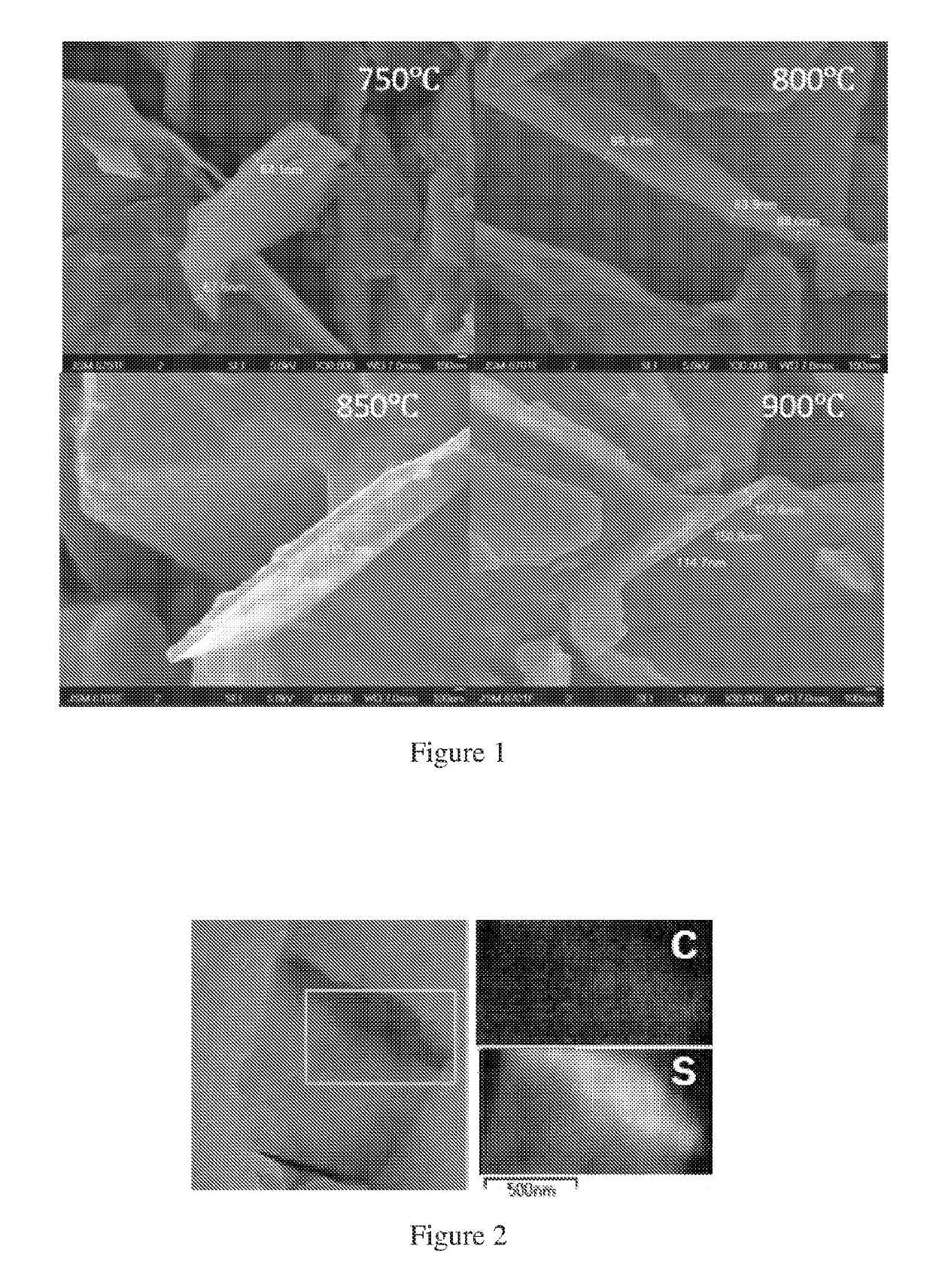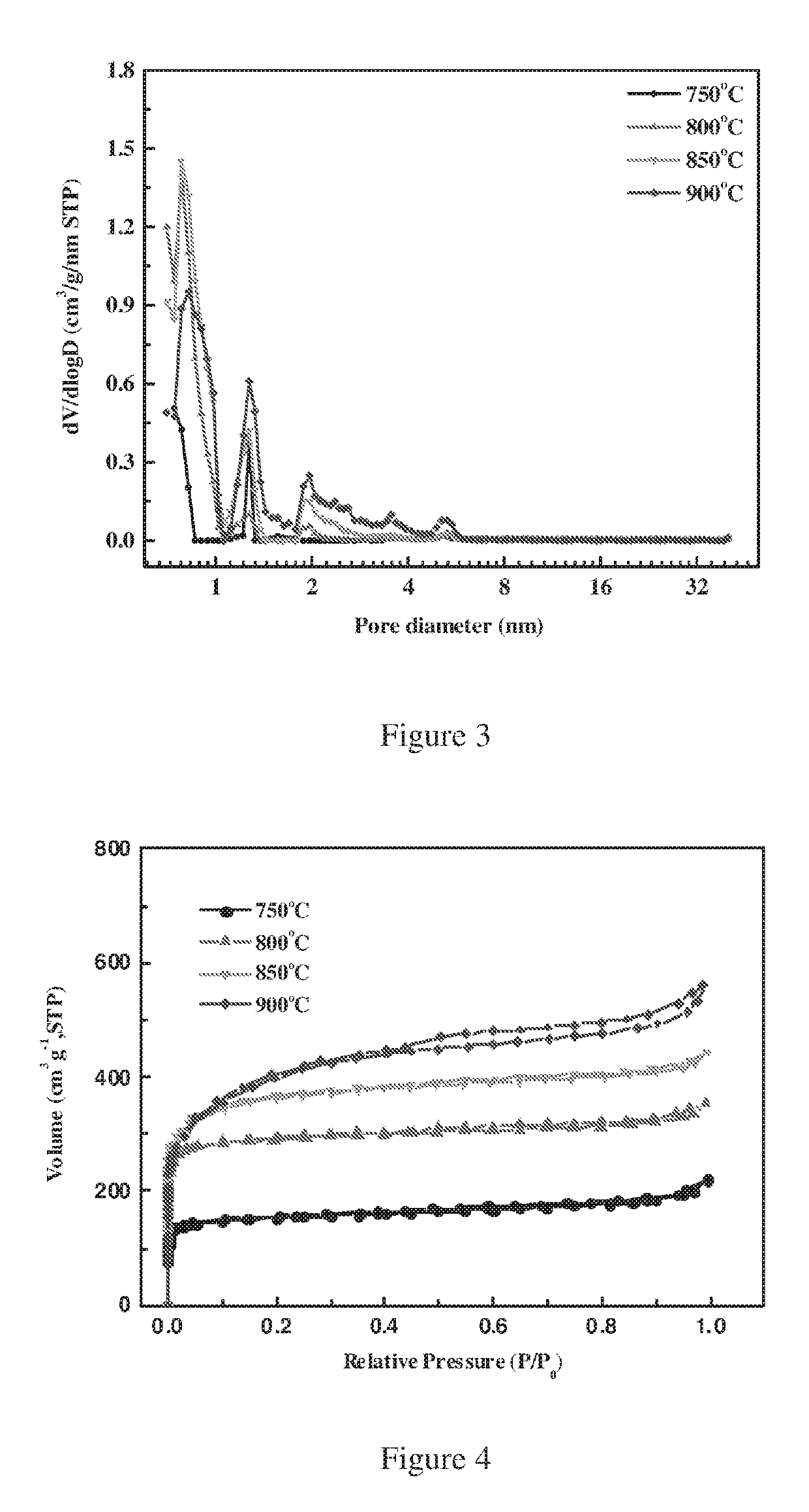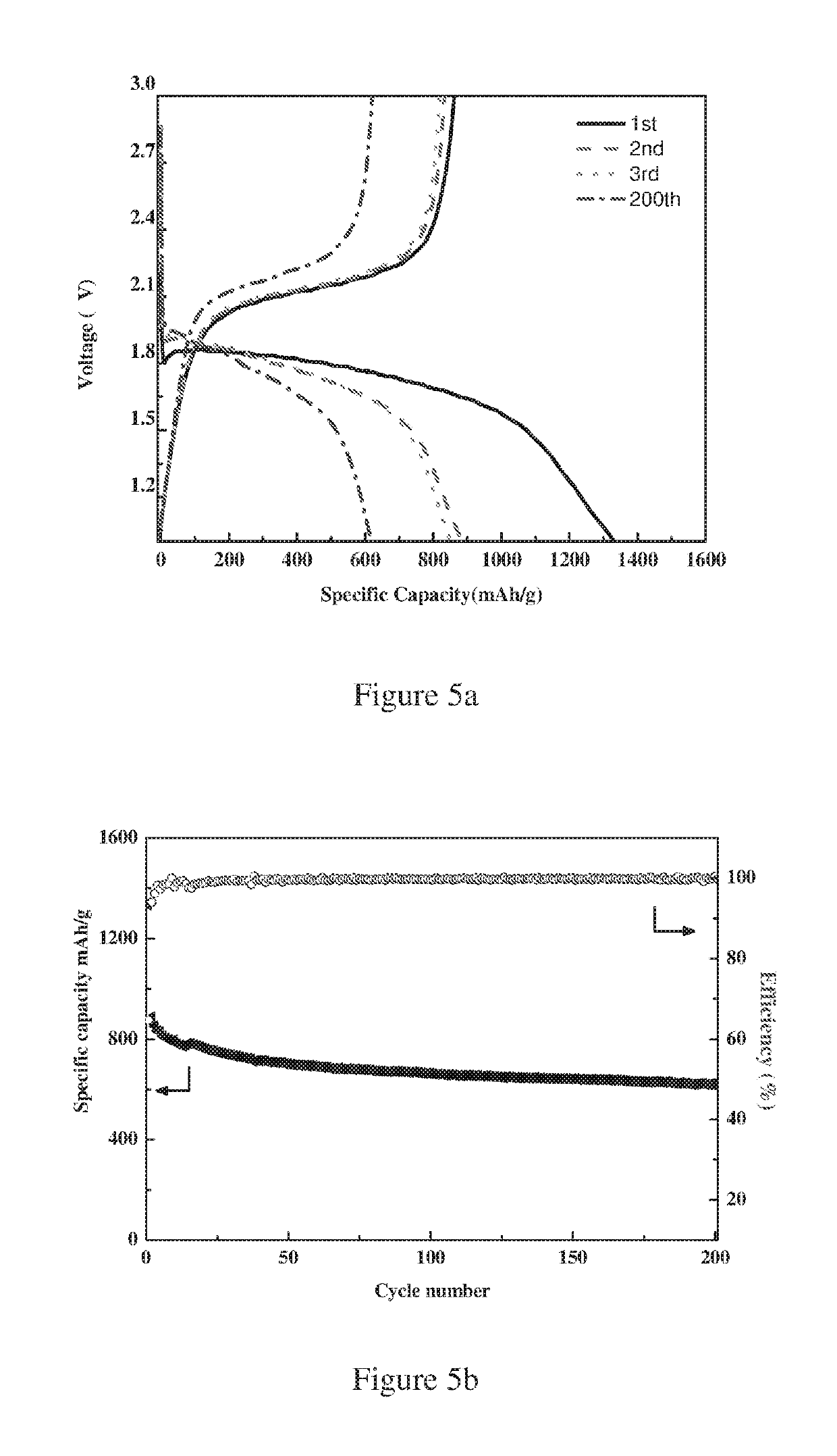Sulfur-carbon composite comprising micro-porous carbon nanosheets for lithium-sulfur batteries and process for preparing the same
a lithium-sulfur battery and carbon nanosheet technology, applied in the field of sulfur-carbon composites comprising micro-porous carbon nanosheets, can solve the problems of insufficient cycle life, low coulombic efficiency, and significant capacity fading, and achieve the effects of improving cyclic stability, limiting dissolution, and enhancing utilization of sulfur
- Summary
- Abstract
- Description
- Claims
- Application Information
AI Technical Summary
Benefits of technology
Problems solved by technology
Method used
Image
Examples
example 1a
[0045]The Preparation of Sulfur-Carbon Composite 1a According to the Present Invention
[0046]10 g of potassium citrate was carbonized at 750° C. in an Ar flow for one hour. The obtained black product was then washed by dilute HCl solution until reaching neutral. After that, the solid was collected by filtration, washed with abundant distilled water and dried at 100° C. for 12 hours in an oven. 0.5 g carbon nanosheets were obtained whose length is in the range of 1-3 μm. The information about the thickness of the obtained carbon nanosheets was summarized in the following Table 1.
[0047]100 mg sulfur was first dissolved completely in CCl4 solvent and then the above obtained carbon nanosheets were added into the above solution of sulfur. After the solvent volatizes completely, the mixture was then put into a sealed-Teflon and heated at 155° C. for 20 h.
[0048]Scanning Electron Microscopy (SEM) (JEOS 6701F, operating at 10 kV), Transmission Electron Microscopy (TEM) (Tecnai F20). XRD (Phil...
example 1b
[0052]The Preparation of Sulfur-Carbon Composite 1b According to the Present Invention
[0053]The same procedures in Example 1a were repeated in Example 1b except that the temperature for carbonization in Example 1b was changed from 750° C. to 800° C. Carbon nanosheets with length in the range of 1-5 μm were obtained.
[0054]From FIG. 6a, when discharged at 0.1 C, the prepared sulfur-carbon composite exhibited a single plateau at ca. 1.85V. and delivered an initial discharge capacity of 1420 mAh / g and a reversible capacity of 940 mAh / g calculated based on the mass of sulfur. As shown in FIG. 6b, the capacity retains about 64.5% after 200 cycles and the initial coulumbic efficiency is about 63.1%.
example 1c
[0055]The Preparation of Sulfur-Carbon Composite 1c According to the Present Invention
[0056]The same procedures in Example 1a were repeated in Example 1c except that the temperature for carbonization in Example 1c was changed from 750° C. to 850° C. Carbon nanosheets with length in the range of 2-5 μm were obtained.
[0057]From FIG. 7a, when discharged at 0.1 C, the prepared sulfur-carbon composite exhibited a plateau at 1.8V following a short plateau at 2.4V, and delivered an initial discharge capacity of 1600 mAh / g and a reversible capacity of 836 mAh / g calculated based on the mass of sulfur. As shown in FIG. 7b, the capacity retains about 70.4% after 200 cycles and the initial coulumbic efficiency is about 47.3%.
PUM
| Property | Measurement | Unit |
|---|---|---|
| thickness | aaaaa | aaaaa |
| temperature | aaaaa | aaaaa |
| temperature | aaaaa | aaaaa |
Abstract
Description
Claims
Application Information
 Login to View More
Login to View More - R&D
- Intellectual Property
- Life Sciences
- Materials
- Tech Scout
- Unparalleled Data Quality
- Higher Quality Content
- 60% Fewer Hallucinations
Browse by: Latest US Patents, China's latest patents, Technical Efficacy Thesaurus, Application Domain, Technology Topic, Popular Technical Reports.
© 2025 PatSnap. All rights reserved.Legal|Privacy policy|Modern Slavery Act Transparency Statement|Sitemap|About US| Contact US: help@patsnap.com



